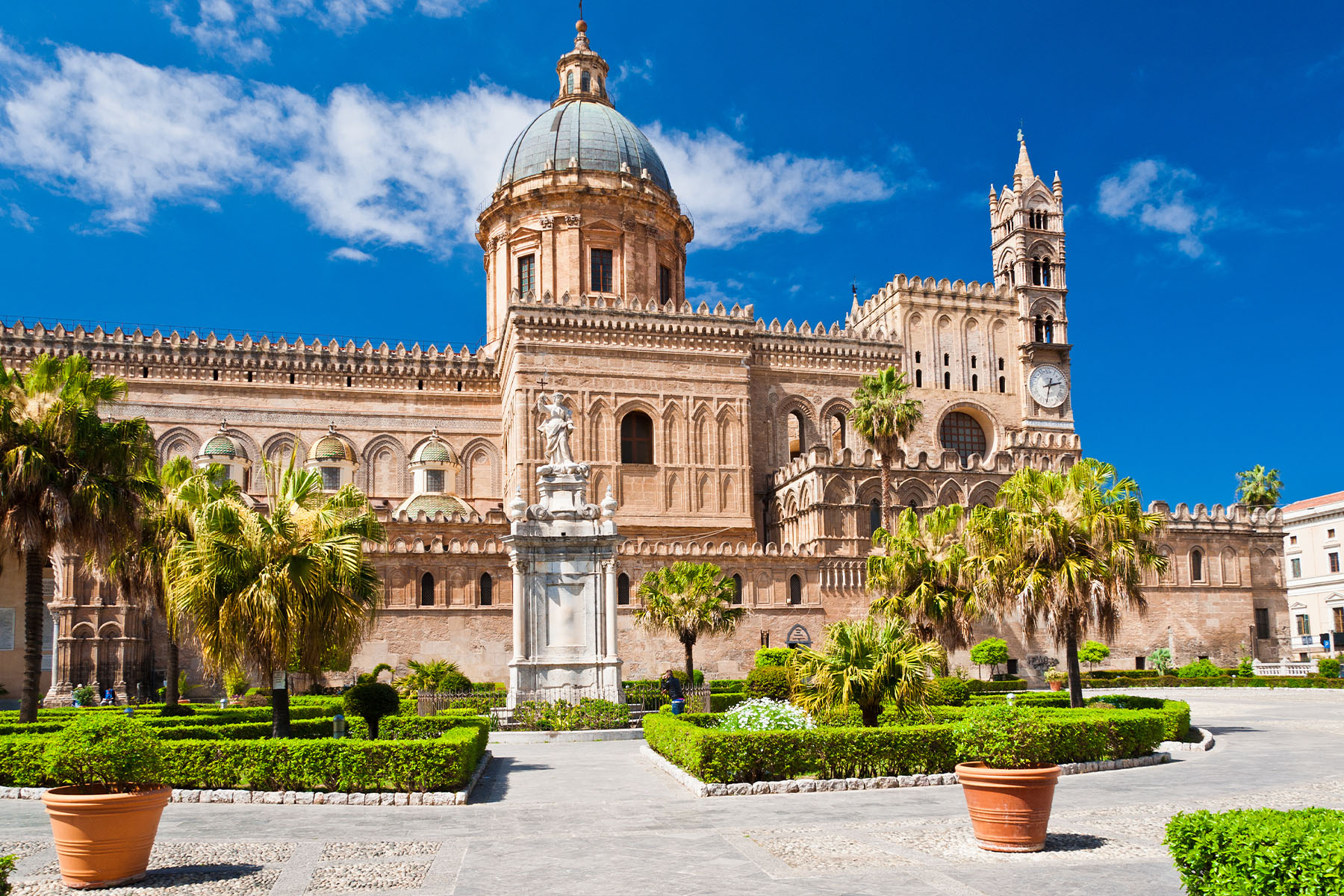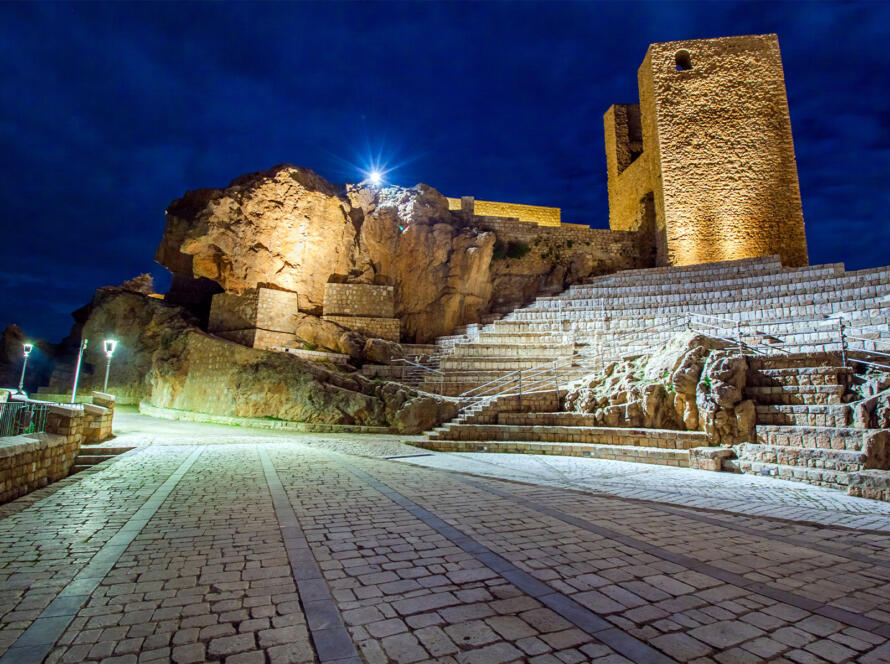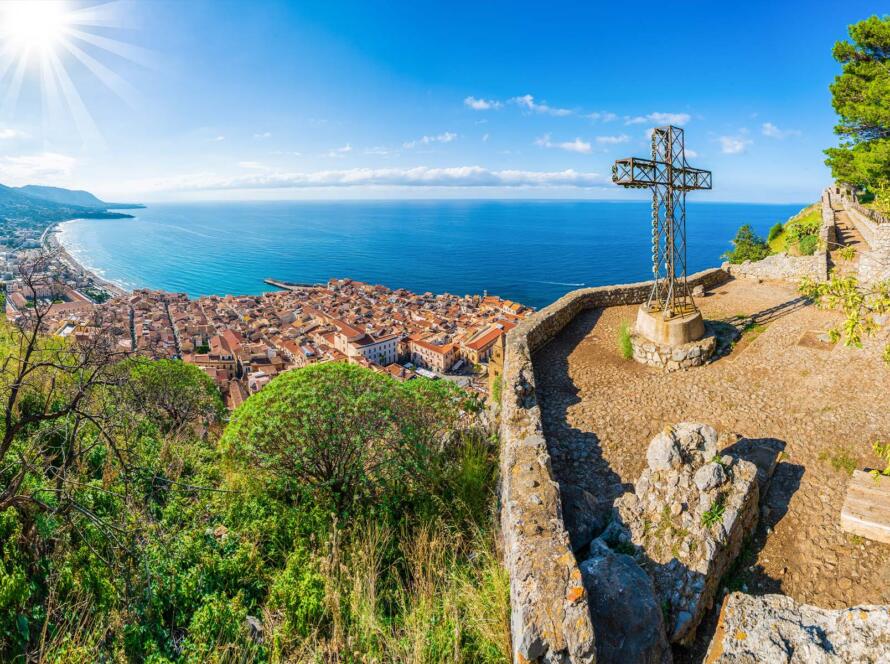Palermo, located on the north-west coast and capital of the island, rich in history, culture, art and traditions is a must-see destination if you visit the island. The city, with a millenial history, reflects the influences of different cultures, including Phoenician, Roman, Byzantine, Arab, Norman and Spanish. This mixture of influences is manifested in the city’s rich cultural heritage, highlighted by the monuments, churches, palaces and markets that tell its story. Getting lost in the streets of Palermo is equivalent to a journey through history, an experience not to be missed if you are anywhere near Palermo.
Possible starting point for the itinerary could be Piazza Indipendenza, one of Palermo’s central squares from which many of the city’s attractions branch off. From here you can admire Porta Nuova, the Palatine Chapel and the Royal Palace. The square has a large garden, at the centre of which stands the obelisk in honour of the Martyrs of Italian Independence. From the square, there is easy access to the Royal Palace (or Palazzo dei Normanni), a jewel of the Arab-Norman route built in the 10th century. The palace represents the perfect mix of the two populations that inhabited the city, the Arabs who left traces in the palace’s architecture and the Normans who chose it as their residence. Today, the Palace houses the Assembly of the Sicilian Region, the seat of the Sicilian Parliament, the oldest parliament in Europe.
Inside the palace is The Paltine Chapel, built in 1130 by king Roger II, who wanted a private chapel to be built in the Palace. It is the meeting point of three different cultures and religion as islamic, Latin and Byzantine craftsmen were involved in both the architecture and decoration. The biggest attraction inside the Chapel are its mosaics, consisting of two sheets of glass divided by a very thin layer of gold, which shimmer in the light and represent the Word of God.
To reach Palermo Cathedral, whose origin can be traced back to 1170, during the reign of William II, you just have to wander through the ancient streets. During the Saracen occupation, the Cathedral was turned into a mosque, only to return to Christian worship with the arrival of the Normans in 1072. This made the Cathedral filled with works of art and decorations from different eras and cultures, making it a cultural jewel of inestimable value today. But not only arab-norman; Palermo is also baroque, thanks to numerous example of architecture, like the Church of the Santissimo Salvatore. It was founded in Norman times, the church had its first transformation in 1528, when the typical Norman structure was changed to a basilica form. In 1682, Paolo Amato had revolutioned completely the chuch structure, making it an excellent example of baroque architecture.
For theatre lovers, a must will be the visit to Palermo’s historic theatre: Massimo and Politeama. Teatro Massimo is the third largest opera house in Europe, dominates Piazza Giuseppe Verdi with its elegant architecture. The Teatro Politeama, an imposing building in Pompeian and neoclassical style, stands on Piazza Ruggero Settimo, inaugurated in 1874 with the opera ‘i Capuleti e i Montecchi’.
However, we cannot overlook the fact that Palermo is also the queen of street food, making a break dedicated to traditional Sicilian food and folklore at Antico Mercato del Capo a must. This market, founded in the Muslim era and inhabited by the Schiavoni, pirates and slave traders, is the beating heart of Palermo’s folklore, characterised by the aromas of typical Sicilian delicacies and the characteristic ‘abbanniare’ (shouting) of the vendors.




